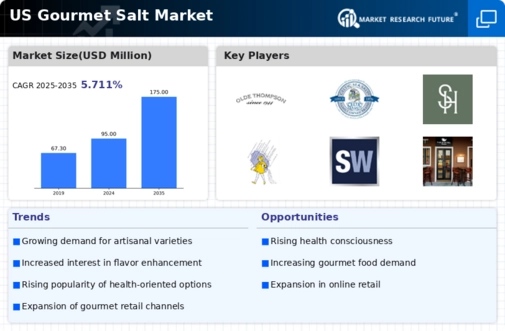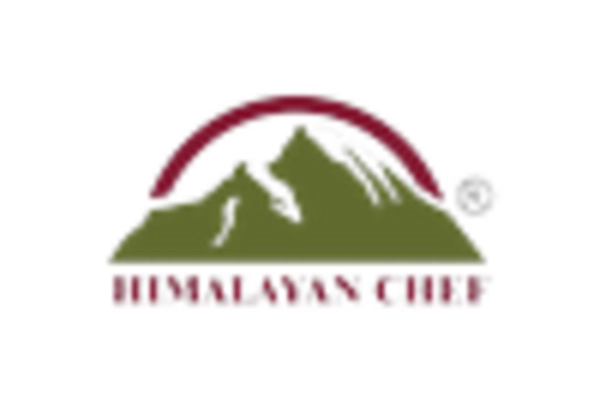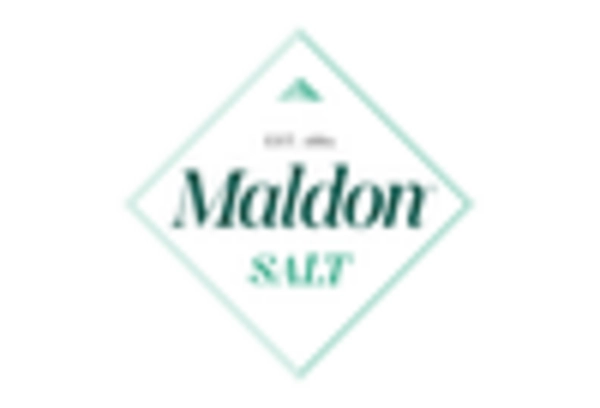The gourmet salt market in the US is characterized by a dynamic competitive landscape, driven by increasing consumer interest in culinary experiences and health-conscious choices. Key players such as SaltWorks (US), Jacobsen Salt Co. (US), and Himalayan Chef (PK) are strategically positioned to leverage these trends. SaltWorks (US) focuses on product innovation and sustainability, offering a diverse range of gourmet salts that cater to both culinary professionals and home cooks. Jacobsen Salt Co. (US) emphasizes artisanal production methods and local sourcing, appealing to consumers seeking authenticity. Meanwhile, Himalayan Chef (PK) capitalizes on the growing demand for Himalayan pink salt, promoting its health benefits and unique flavor profile. Collectively, these strategies contribute to a competitive environment that prioritizes quality, sustainability, and consumer engagement.
In terms of business tactics, companies are increasingly localizing manufacturing and optimizing supply chains to enhance efficiency and reduce costs. The market structure appears moderately fragmented, with several key players holding significant market shares while numerous smaller brands cater to niche segments. This fragmentation allows for diverse product offerings and fosters innovation, as companies strive to differentiate themselves in a crowded marketplace.
In October 2025, SaltWorks (US) announced the launch of a new line of flavored gourmet salts, designed to cater to the growing trend of culinary experimentation among consumers. This strategic move not only expands their product portfolio but also positions the company to capture a larger share of the market by appealing to adventurous home cooks and professional chefs alike. The introduction of these innovative flavors may enhance brand loyalty and drive sales growth in a competitive landscape.
In September 2025, Jacobsen Salt Co. (US) entered into a partnership with a prominent organic spice company to create a co-branded line of gourmet seasoning blends. This collaboration is significant as it allows Jacobsen to leverage the spice company's established distribution channels, thereby increasing its market reach. The partnership also aligns with the trend of consumers seeking convenient, high-quality seasoning options, potentially enhancing Jacobsen's competitive edge.
In November 2025, Himalayan Chef (PK) launched a new marketing campaign focused on the health benefits of Himalayan pink salt, targeting health-conscious consumers. This initiative is crucial as it not only raises awareness about the product's unique attributes but also positions Himalayan Chef as a leader in the health-oriented segment of the gourmet salt market. By emphasizing the nutritional advantages, the company may attract a broader audience and drive sales in a market increasingly influenced by health trends.
As of November 2025, current competitive trends in the gourmet salt market include a strong emphasis on digitalization, sustainability, and the integration of technology in production processes. Strategic alliances are becoming increasingly important, as companies recognize the value of collaboration in enhancing product offerings and market reach. Looking ahead, competitive differentiation is likely to evolve, shifting from price-based competition to a focus on innovation, technology, and supply chain reliability. This transition suggests that companies that prioritize quality and sustainability will be better positioned to thrive in the future.

















Leave a Comment